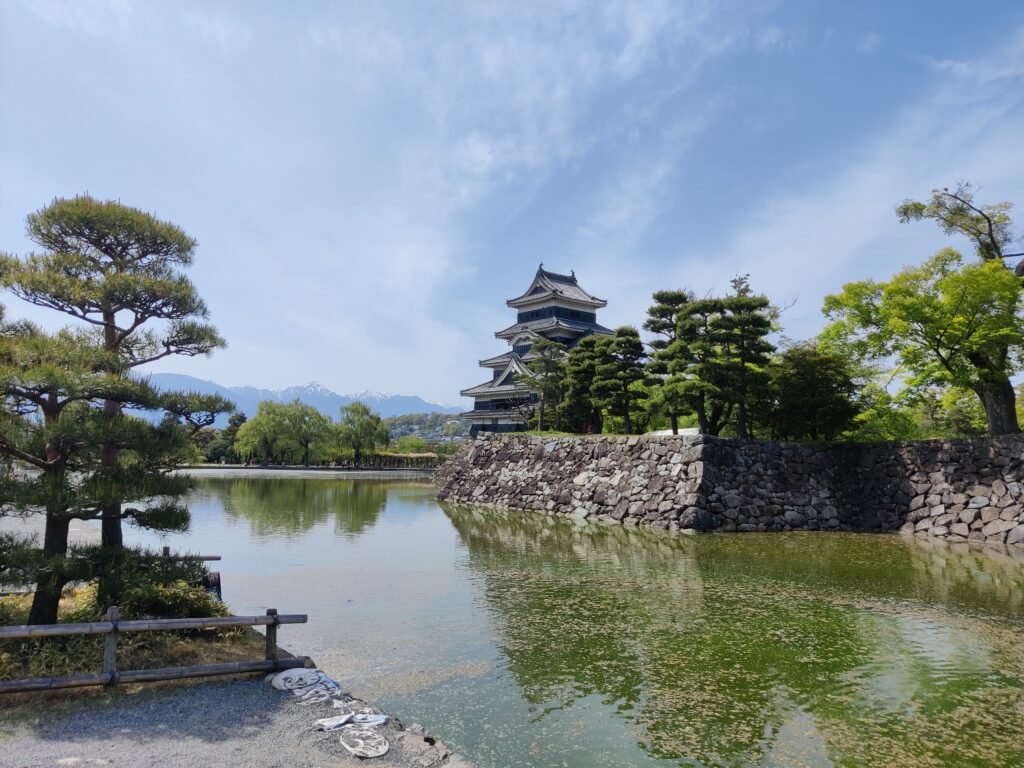Nestled in the heart of Nagano Prefecture, Japan, lies a breathtaking piece of history that is a must-see for anyone visiting the area. Matsumoto Castle, also known as the “Crow Castle,” and previously as Fukashi Castle is a stunning national treasure that dates back to the 16th century. With its impressive black and white exterior and intricate wooden interior, Matsumoto Castle is a true architectural wonder that has stood the test of time.
But there’s more to this castle than meets the eye. Behind the walls of this ancient fortress lie secrets and stories that have captivated visitors for centuries. From the hidden tunnels and trapdoors to the samurai armor on display, there’s something for everyone to discover at Matsumoto Castle. So pack your bags, grab your camera, and get ready to uncover the secrets of one of Japan’s most beloved landmarks.
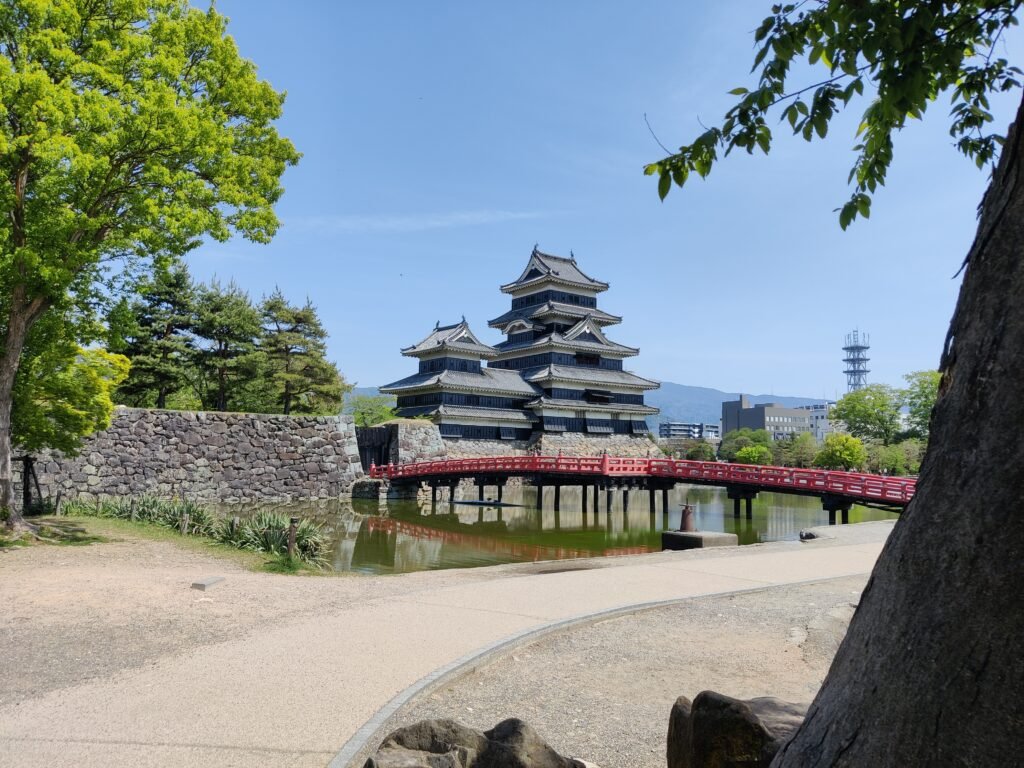
The History of Matsumoto Castle
Matsumoto Castle was built in 1593 by Lord Ishikawa Kazumasa, a trusted ally of shogun Toyotomi Hideyoshi. The castle was designed to serve as a stronghold for the Ishikawa family during the turbulent Sengoku period. The castle was later owned by the powerful Ogasawara clan, who added several fortifications to the castle, including a moat and additional walls.
The Ogasawara clan vassals of the Takeda clan. The Takeda clan was a prominent Japanese clan during the Sengoku period (1467-1603) in feudal Japan. They were based in Kai Province (present-day Yamanashi Prefecture) and were known for their military prowess and strategic alliances.
Despite numerous battles and natural disasters, Matsumoto Castle has survived to this day, making it one of Japan’s most significant historical landmarks. The castle was designated a National Treasure in 1930 and is now a popular tourist attraction.
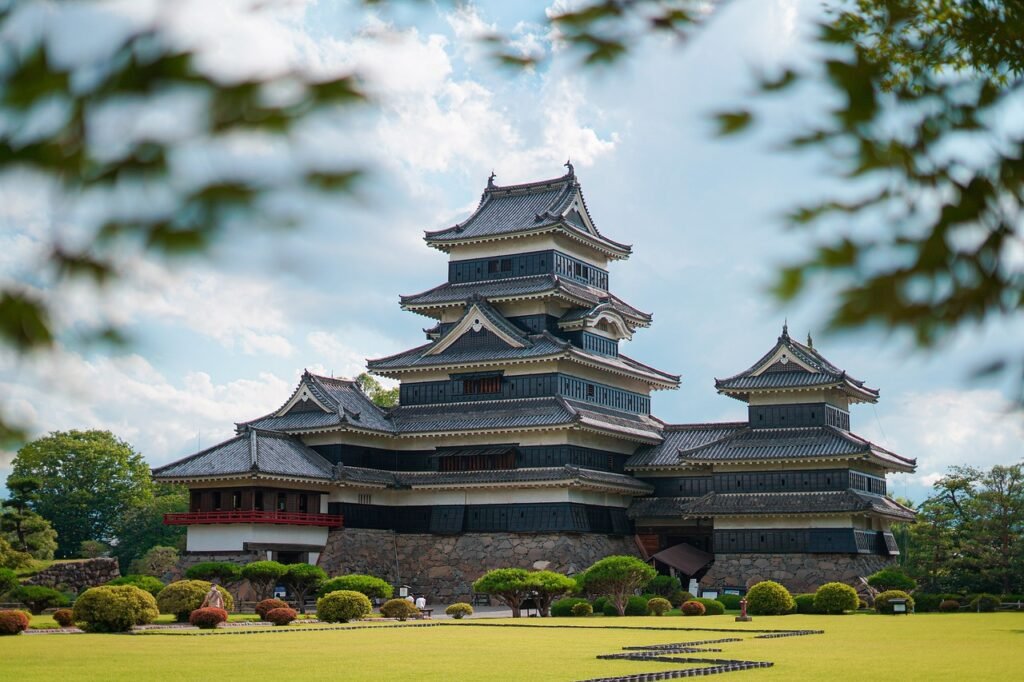
Unique features of Matsumoto Castle
Matsumoto Castle’s most unique feature is its black and white exterior. The castle’s walls are painted black to give the appearance of a crow’s feathers, while the white plaster walls of the castle’s interior serve as a stark contrast to the dark exterior.
Another notable feature of Matsumoto Castle is its ingenious design. The castle’s walls are incredibly thick, and the castle has several hidden tunnels and trapdoors that were used to defend the castle during battles.
Visitors to Matsumoto Castle can also see the castle’s original wooden interior, which is a stunning example of traditional Japanese architecture. The castle’s main keep has six floors, each with its unique layout and design.

The architectural design of Matsumoto Castle
Matsumoto Castle is a prime example of traditional Japanese castle architecture. The castle was designed to be both a stronghold and a symbol of power, with its imposing exterior, high castle tower, and intricate interior design.
The castle’s wooden interior is especially noteworthy, with its intricate latticework and detailed carvings. The castle’s main keep has several rooms that were used for different purposes, including a meeting room, living quarters, and a storage area.
The castle’s main keep is also notable for its unique construction. Unlike many other Japanese castles, Matsumoto Castle was built on flat ground rather than on a hill or mountain. This design decision allowed the castle to be more easily defended against attackers.
The significance of Matsumoto Castle as a National Treasure
Matsumoto Castle is a significant cultural and historical landmark in Japan. The castle’s unique design and construction make it an excellent example of traditional Japanese architecture, while the castle’s history and significance make it an essential part of Japan’s national heritage.
The castle has been designated a Treasure by the Japanese government, which means that it is protected from damage or destruction. The castle is also a popular tourist destination and is visited by thousands of people each year. Unlike many other castles in Japan which mostly are reconstructions, Treasure Castles are still the original castles. Other National treasures are Himeji Castle and Inuyama Castle.
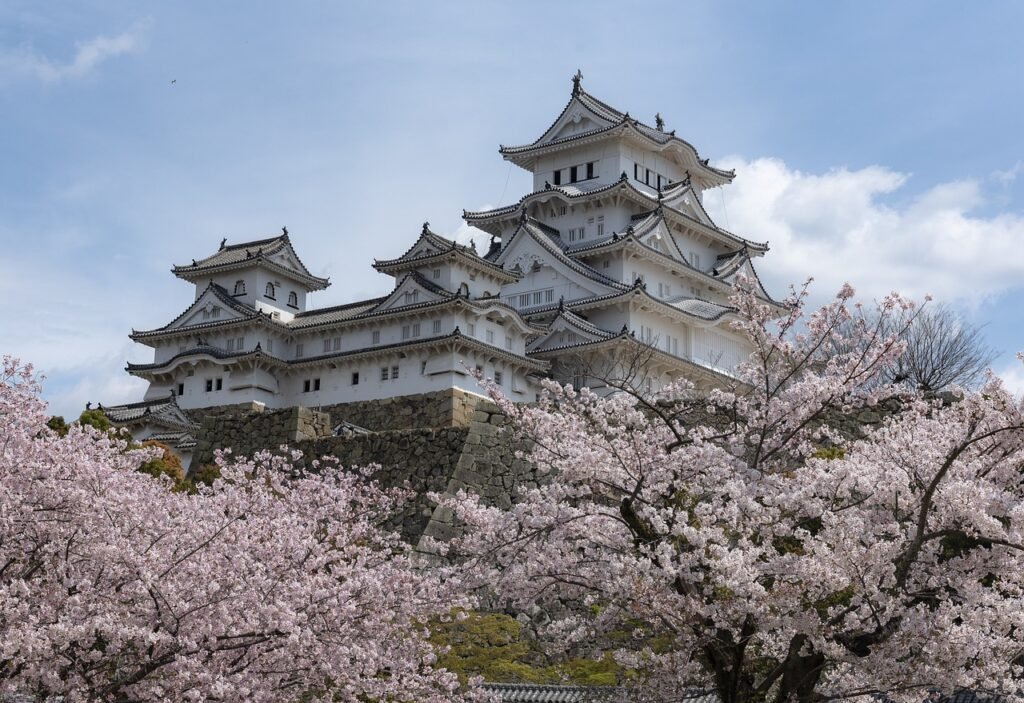
The best time to visit Matsumoto Castle
Matsumoto Castle is open to visitors year-round, but the best time to visit is during the spring and fall. During the spring, visitors can see the castle’s cherry trees with blossoms in full bloom, while the fall brings stunning autumn foliage to the castle’s grounds.
Visitors should also check the castle’s schedule for special events, such as the “Castle Under the Moon” event, which takes place on selected nights during the summer months.
How to get to Matsumoto Castle
Matsumoto Castle is located in Matsumoto City in Nagano Prefecture, Japan. The castle is easily accessible by train or bus from Tokyo or other major cities in Japan.
Visitors can take the JR Limited Express train from Tokyo to JR Matsumoto Station, which takes approximately 2.5 hours. From the station, visitors can take a bus or taxi to the castle, which is located about 15 minutes away.
Things to do near Matsumoto Castle
Visitors to Matsumoto Castle can also enjoy several other attractions in the area. The nearby Matsumoto City Museum of Art features a collection of works by local artists and is located in a beautiful park.
The nearby Matsumoto City Museum is also worth a visit, with exhibits on the history and culture of the Matsumoto region. Visitors can also explore the nearby Nakamachi-dori shopping street, which features traditional Japanese architecture and several shops and restaurants.
Other than that, Matsumoto is a true castle town and there is not much else to do. I do recommend you try ” Soba” somewhere. These Japanese noodles are especially famous in the province of Nagano.
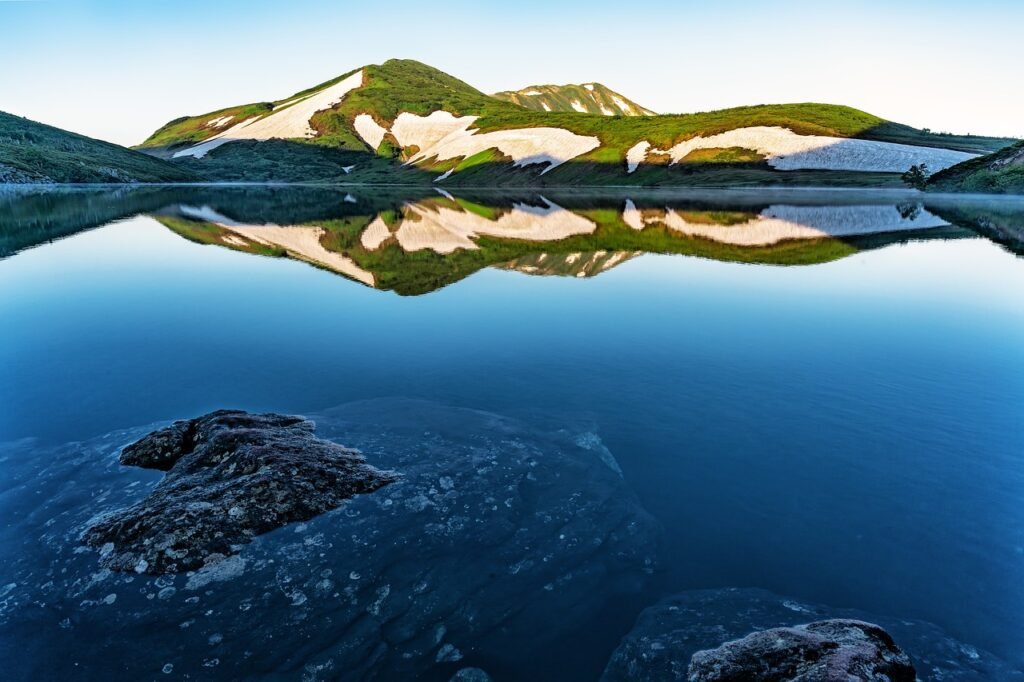
Hakuba
If you enjoy hiking or winter sports when you visit in winter and you have time to spare, I recommend you visit Hakuba. It’s about 1 hour north of Matsumoto. You can reach it quite easily by train from Matsumoto Station and by car. Nagano is after all known as the Japanese Alps.
Hakuba is a popular ski resort located in Japan. It is well-known for its stunning snow-covered mountains, which provide excellent skiing and snowboarding conditions during the winter months.
The resort offers a wide range of slopes suitable for all skill levels, from beginner to advanced. In addition to skiing, visitors can enjoy hot springs, local cuisine, and various winter activities, such as snowshoeing and snowmobiling. The area also hosted the 1998 Winter Olympics, further solidifying its reputation as a top destination for winter sports enthusiasts.
Also in the summer, you can take the ski lift up to enjoy hikes and stunning views.
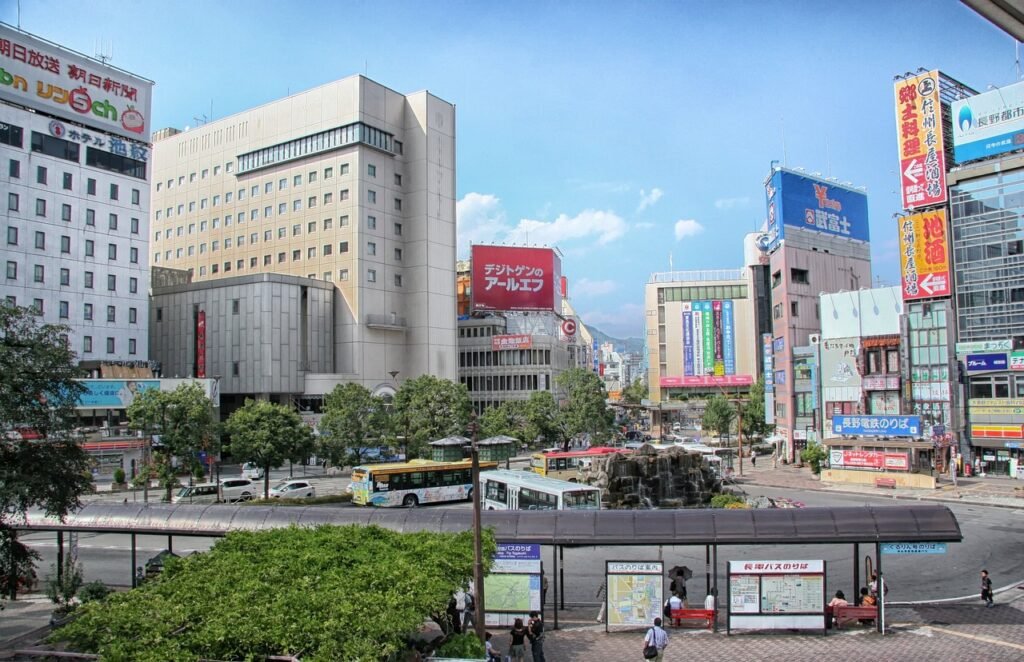
Nagano City
Nagano City, located in the heart of Japan, offers a delightful blend of natural beauty, historical sites, and cultural experiences. One of the must-visit attractions is the famous Zenkoji Temple, a significant religious site dating back over 1,400 years.
You can explore the temple grounds, witness Buddhist rituals, and even participate in the traditional Buddhist pilgrimage. For nature enthusiasts, a visit to the stunning Togakushi Shrine and its picturesque forested trails is highly recommended. Additionally, Nagano City is renowned for its hot springs, and a relaxing dip in one of the many onsens is a perfect way to unwind.
If you’re driving from Matsumoto to Nagano City, the distance is approximately 45 kilometers, making it a convenient day trip destination.
Interesting facts about Matsumoto Castle
– Matsumoto Castle is one of only a few Japanese castles that still has its original wooden interior.
– The castle’s walls are painted black to give the appearance of a crow’s feathers, while the white plaster walls of the castle’s interior serve as a stark contrast to the dark exterior.
– Matsumoto Castle is one of the few Japanese castles that was built on flat ground rather than on a hill or mountain.
– The castle’s main keep has six floors, each with its unique layout and design.
– Matsumoto Castle was used as a filming location for the 1967 James Bond film “You Only Live Twice.”
Conclusion
Matsumoto Castle is an essential part of Japan’s cultural and historical heritage. With its unique design, ingenious construction, and rich history, the castle is a must-see for anyone visiting the Nagano Prefecture. Whether you’re interested in traditional Japanese architecture or simply want to experience some of Japan’s most beautiful landmarks, Matsumoto Castle is a destination that should not be missed. So pack your bags, grab your camera, and get ready to discover the secrets of one of Japan’s most beloved landmarks.
- Are There Tigers in Japan? Discover the Surprising Truth Behind These Majestic Creatures! - August 3, 2025
- Discover the Charm of Nagoya: Top 10 Must-Do Experiences - November 9, 2023
- Embracing the Samurai Spirit: Beyond the Blade - November 7, 2023
